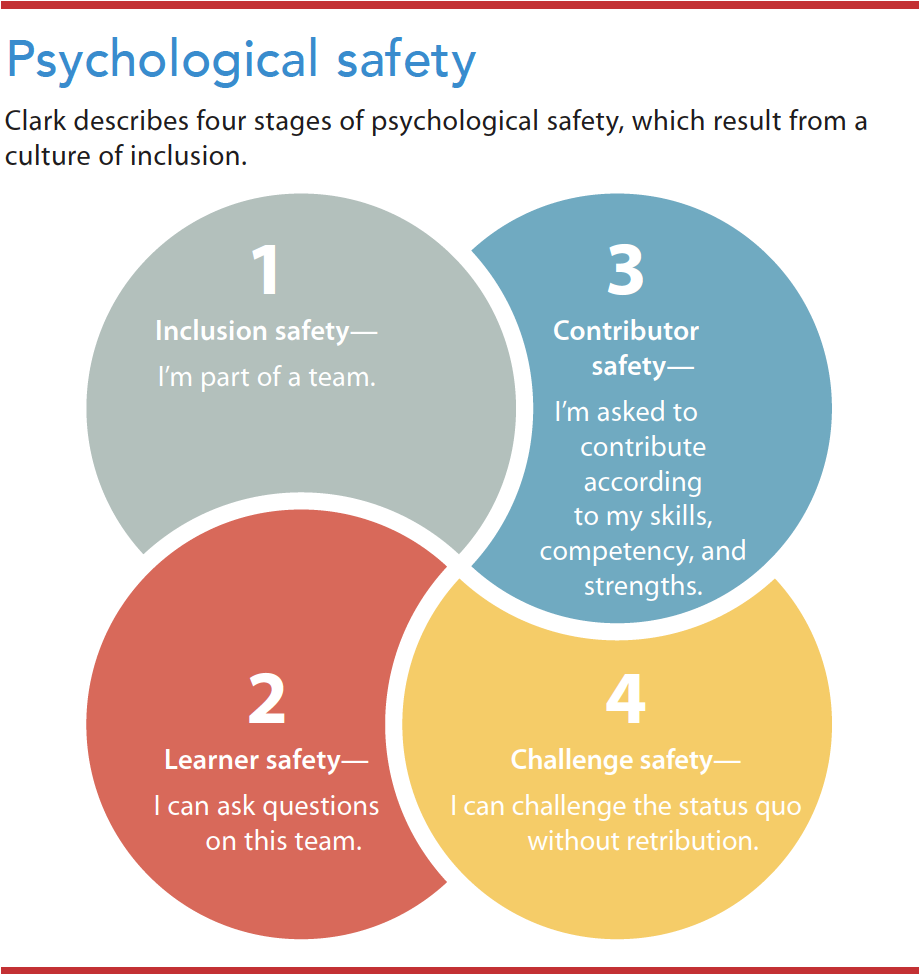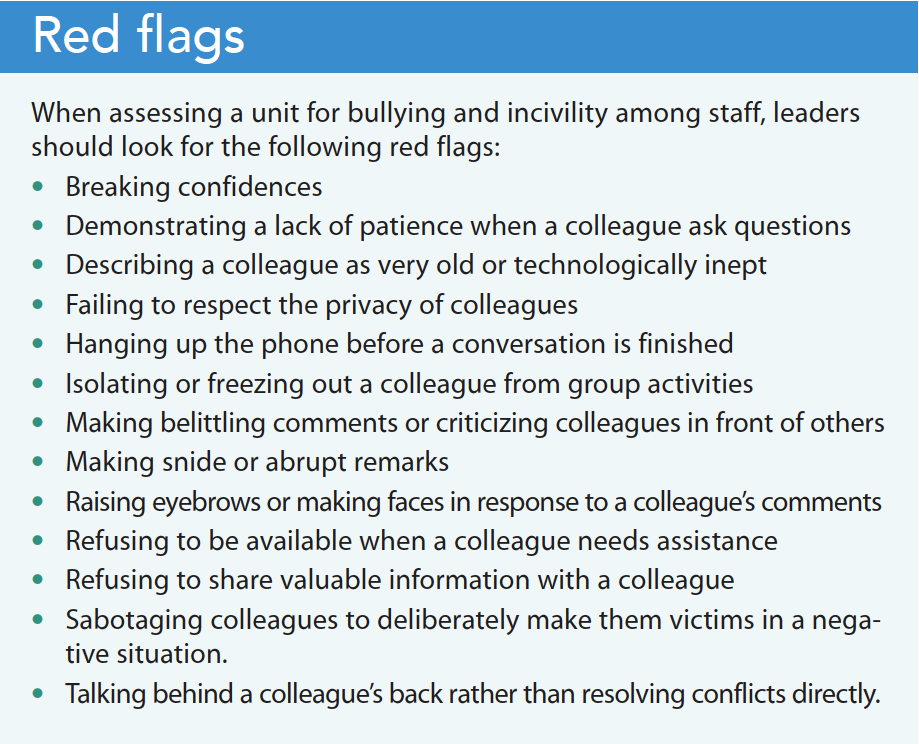Identify and prioritize opportunities to enhance teamwork and inclusion.
- The COVID-19 pandemic prompted the cancellation of workplace social activities that help to create connections and a positive team culture.
- Re-establishing connections and addressing incivility requires data acquired through a unit culture assessment.
- Without accurate data, steps to address a toxic workplace may not be successful.
Mark is the new director of a busy neonatal intensive care unit (NICU). When reviewing the unit’s most recent Glint Nurse Engagement scores, he notes that most staff don’t recommend the unit as an excellent place to work. Staff comments include “Not an inclusive culture,” “Cliques are present in this environment,” and “Staff gossip about one another.” Mark realizes that significant problems exist with the unit culture but wants to learn more before designing specific interventions.
Many new leaders like Mark find issues with their unit cultures, especially after the COVID-19 pandemic. During the height of the pandemic in 2020, most leaders successfully kept their teams together and marveled at the level of team collaboration. However, that cohesiveness fell apart in 2021 with politicization of the vaccine and disinformation about the virus. Nurses became more pessimistic about the future. According to Nursing Solutions, Inc., nurse turnover skyrocketed to the current annual rate of 27% in acute care environments, and the use of travel and agency nurses to supplement core team staffing have become commonplace.
With social distancing and mask-wearing, nursing teams also lost their rituals, such as meals together, socializing outside of work, and celebrating events in the lives of staff. In her book Rituals Roadmap, Erica Keswin describes rituals as an evidence-based practice for building strong cultures. They help us connect in meaningful ways. When we lose rituals, our connections to one another weaken. Celebrating birthdays, baby showers, or group dinners revitalize us in ways other activities don’t and help us to know more about each other. In the absence of solid team connections, unit cultures can erode.
Mark is wise to realize that he needs to quickly address the problems raised in the engagement survey before they become normalized. Unit culture significantly impacts a range of performance metrics, which drive reimbursement. Team members in dysfunctional cultures are less likely to communicate about problems, resulting in more hidden medical errors and safety issues.
The invisible architecture
Healthcare leadership experts Bob Dent and Joe Tye describe culture as the invisible architecture of units. You can gain a sense of the culture as soon as you enter a unit by watching how staff interact and noting what’s displayed in public spaces. A team’s values, culture, and attitudes can lead to a robust and inclusive culture, which makes it hard to leave, or to one that’s toxic, which makes it easy to resign. Emotional negativity and behaviors—such as gossiping, incivility, disrespect, and bullying—deteriorate a unit’s culture. These behaviors hurt employee engagement, satisfaction, and retention, as well as quality outcomes, leading to nurse burnout and patient safety events. Porath found that when staff don’t observe a sense of community in their work environments, they’re more likely to feel lonely and emotionally isolated.
Lack of inclusion, which Mark observes in the NICU, also presents a problem. Timothy Clark, founder and chief executive officer of LeaderFactor, reminds us that inclusion is essential for psychological safety because it activates our humanity. If excluded from unit activities, nurses can’t achieve inclusion safety and won’t feel psychologically secure on the team. Without a cultural improvement, Mark will have difficulty retaining staff, and patient outcomes may suffer. (See Psychological safety.)
Components of a healthy culture
As Mark considers his next steps, he should begin with the end in mind by asking what a healthy unit culture looks like. Several experts note that staff on units with healthy cultures demonstrate the following behaviors:
- A sense of purpose and pride in their work
- Provision of team backup when others need it
- Tolerance of diverse opinions
- A refusal to talk about others when they’re not in the room
- A welcoming attitude toward new team members
- Positivity and an assumption of good intentions on the part of others
- Accountability and responsibility for assignments
- Engagement in their work
- Speaking up without fear of retribution
- Respect and fairness toward others
- Open communication.
The results of the NICU’s Glint Survey tell Mark that some of these behaviors don’t exist on his team. For example, team backup is essential in healthcare, and this era of short staffing makes it even more critical. Without enough RNs, we can’t provide primary nursing care as we have in the past.
Before he designs interventions, Mark may need more data. He can start by asking questions to assess the unit’s teamwork strength, such as the following:
- Do you feel safe asking your team members for help when needed?
- Do you have a system on the team to let others know when you need help? (Some units use a traffic light system to signal when a staff member feels overwhelmed.)
- How do your team members respond when you ask for help?
- Is the phrase, “It’s not my job,” used on the unit?
- When patients ask for help, does the responding team member try to solve the problem?
- What happens when team members run late with their assignments during a shift?
Culture assessment
Given the number of nursing staff Mark supervises, team members might view the unit culture differently depending on their role and shift. Subcultures frequently exist within nursing unit cultures. Mark must consider various perspectives, including those of charge nurses, staff nurses, support staff, and even other departments. A thorough assessment will ensure representation of all personnel and allow them to share their perceptions and experiences. Mark can accomplish this via focus groups or individual one-on-one discussions about the unit’s strengths and weaknesses. He could ask some of the following questions:
- Name the greatest weakness of the unit. Why?
- Name the greatest strength of the unit. Why?
- What behaviors on the unit would you like to see less of?
- What behaviors on the unit would you like to see more of?
- What’s your role in supporting the strengths?
- What’s your role in supporting positive change when weaknesses are discovered?
- What do you believe is the role of other team members in supporting the strengths?
- What do you believe is the role of other team members in supporting positive change to resolve problems?
Mark can then use these discussions to identify issues related to communication, shift handoffs, and teamwork. He also can use surveys to quantify his findings further. For example, the Culture Assessment Tool, as described by Kennerly and colleagues, can provide Mark with staff assessments of teamwork, communication, satisfaction, professional commitment, behaviors, and expectations. Based on the areas that might benefit from positive change, Mark might consider assessing specifics using root cause analysis or deeper questioning. For example, if teamwork is an area of concern, he can assess nurse-to-nurse handoffs, patient safety, or justice culture. His findings will help him determine specific required improvements.
Bullying and incivility assessment
As Mark assesses the unit’s culture, he might learn that bullying and incivility have been normalized. Addressing bullying and incivility is one of healthcare leaders’ biggest challenges. A recent American Organization for Nursing Leadership study indicates that 72% of leaders have witnessed bullying and incivility in their environments over the past year. An increasing percentage of these incidents involve patients and their families, but 56% also saw these behaviors among team members. Although seemingly counterintuitive, bullying and incivility increase when nurses experience burnout, stress, and anxiety. For some staff, the upswing in public rudeness has normalized bullying behaviors. The tolerance of gossip that the NICU staff reported on the Glint Engagement Survey serves as a warning that this could be happening with Mark’s team. (See Red flags.)
Renee Thompson, an expert on bullying and incivility in the workplace, recommends that leaders perform an independent comprehensive assessment before designing any interventions. New leaders frequently make the mistake of jumping into action without full knowledge of all the issues and problems. Without independent, reliable assessment data, Mark may find it challenging to pinpoint the issues on his team. Thompson notes that few nurses voluntarily engage with their leaders to discuss their experiences with incivility and bullying, so Mark should observe staff behaviors in the unit during change-of-shift reports, assignment of care, and bedside rounding.
NICUs are high-stress areas for parents and other family members, so Mark’s cultural scan for bullying and incivility should extend to visitors and family members (his patient population doesn’t pose a concern). In a recent pulse survey, American Nurses Association researchers noted that an alarming number of nurses report high levels of bullying, incivility, and violence from patients and families, especially in acute care. Press Ganey researchers found that an average of 57 physical assaults are reported daily by nursing staff, but this could be the tip of a much deeper iceberg since many incidents go unreported. Several attacks in 2022 led to the murders of nurses in their workplaces.
Health systems grapple with the uneasy balance between creating excellent patient experiences and protecting the workforce. Many have started crisis prevention and intervention training, but staff may feel ill-equipped to deal with verbal escalation and violent responses. Other organizations have developed codes of conduct. For example, the Mass General Brigham healthcare system now requires patients and visitors to sign a document that outlines conduct considered disrespectful, which includes the following:
- Offensive comments about others’ race, accent, religion, gender, sexual orientation, or other personal traits
- Refusal to see a clinician or other staff member based on these personal traits
- Physical or verbal threats and assaults
- Sexual or vulgar words or actions
- Disrupting another patient’s care or experience.
Patients are warned that violations of the code of conduct may lead to being asked to make other plans for their care and future non-emergency care.
As part of his unit assessment, Mark may want to evaluate how situationally aware the staff is about threats of violence and incivility. He should question staff about specific family and visitor comments, behaviors, and actions that seem threatening. During his leadership rounding in the NICU, he should watch for signs of verbal disrespect of nursing staff, repeated loss of temper by family members or other visitors, parents or visitors under the influence of alcohol or drugs, family members ignoring visitation or unit policies, confrontations with staff around issues such as mask-wearing, and verbal or physical threats made toward staff, partners, or other visitors.
Use data to improve culture
Assessment data, when collected effectively, aids identification and prioritization of unit change. Unit culture improvement won’t happen without staff involvement. Once Mark has identified the current challenges, he can establish a culture improvement task force (with representation across all shifts) to ensure staff buy-in. As their leader, Mark should work with them to develop feasible action plans that promote a positive change in the unit’s culture.
Mark should reset cultural values and expectations thoughtfully and inclusively, including requesting staff feedback and creative ideas. Action plans require measurable goals and strategies for rewarding change. Mark’s leadership team of formal and informal unit leaders will play a key role in reinforcing cultural expectations and serve as role models for other staff. To ensure they’re effective in this role, Mark may want to offer them leadership development opportunities.
Restore civility
Many nursing cultures lack a feeling of connection. During the pandemic, nursing teams lost the rituals that held them together, and most haven’t yet established new ones. Recent graduates joining nursing units don’t feel as if they’re part of anything special, making it easy to leave with few regrets. Little social glue exists to hold things together. By assessing the unit culture and identifying the problem areas, Mark can begin rebuilding, which will help restore the humanity and civility needed to have a strong culture and deliver excellent care.
Rose O. Sherman is an adjunct professor at the Marian K. Shaughnessy Nurse Leadership Academy, Case Western Reserve University in Cleveland, Ohio, and author of The Nuts and Bolts of Nursing Leadership: Your Toolkit for Success and The Nurse Leader Coach: Become the Boss No One Wants to Leave. You can read her blog at emergingrnleader.com. Tanya M. Cohn is an associate professor of practice and a consulting nurse scientist at Simmons University in Boston, Massachusetts.
American Nurse Journal. 2023; 18(2). Doi: 10.51256/ANJ022328;
Key words: teamwork, inclusion, toxic workplace, health workplace, civility, psychological safety
References
American Nurses Foundation. Pulse on the Nation’s Nurses Survey Series: 2022 Workplace Survey. nursingworld.org/practice-policy/work-environment/health-safety/disaster-preparedness/coronavirus/what-you-need-to-know/covid-19-survey-series-anf-2022-workplace-survey
American Organization of Nursing Leaders. Longitudinal nursing leadership insight study. 2022. aonl.org/resources/nursing-leadership-covid-19-survey
Business Wire. On average, two nurses are assaulted every hour, New Press Ganey analysis finds. September 8, 2022. businesswire.com/news/home/20220908005710/en/On-Average-Two-Nurses-Are-Assaulted-Every-Hour-New-Press-Ganey-Analysis-Finds
Clark TR. The 4 Stages of Psychological Safety: Defining the Path to Inclusion and Innovation. Oakland, CA: Berrett-Koehler Publishing; 2020.
Kennerly S, Heggestad ED, Myers H, Yap TL. Using the Nursing Culture Assessment Tool (NCAT) in long-term care: An update on psychometrics and scoring standardization. Healthcare. 2015;3(3):637-47. doi:10.3390/healthcare3030637
Keswin E. Rituals Roadmap: The Human Way to Transform Everyday Routines into Workplace Magic. New York, NY: McGraw Hill; 2021.
Mass General Brigham. Patient code of conduct. mass generalbrigham.org/en/patient-care/patient-visitor-information/patient-code-of-conduct
Nursing Solutions, Inc. 2022 NSI National Nursing and Health Care Retention & RN Staff Report. nsinursingsolutions.com/Documents/Library/NSI_National_Health_Care_Retention_Report.pdf
Porath C. Mastering Community: The Surprising Ways Coming Together Moves Us from Surviving to Thriving. New York, NY: Balance; 2022.
Thompson R. Enough! Eradicate Bullying and Incivility in Healthcare: Strategies for Front Line Leaders. Incredible Messages Press; 2019.
Tye J, Dent B. Building a Culture of Ownership in Healthcare. Indianapolis, IN: Sigma Theta Tau International; 2020.





















1 Comment. Leave new
Hello, thank you for this great article covering so many aspects of what nurse leaders are going through right now with great ideas of how to tackle! One question I do have is: can you give any ideas or suggestions of action plan items the “Culture Improvement Task Force” might do as they try to re-vamp the culture on the unit? Thank you!